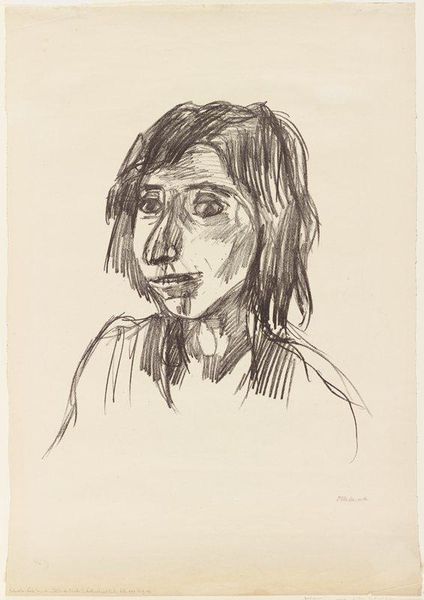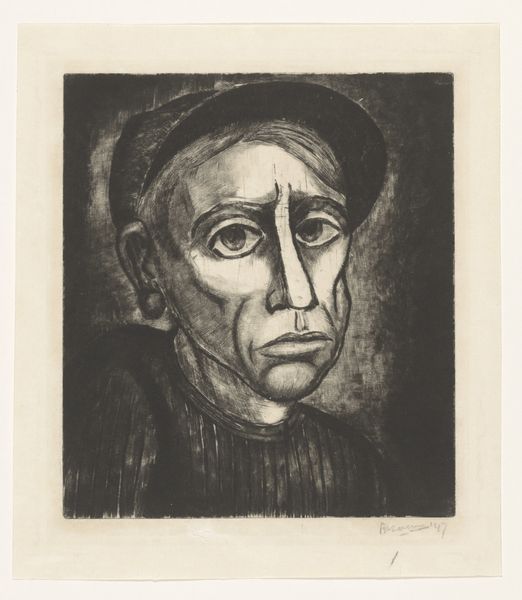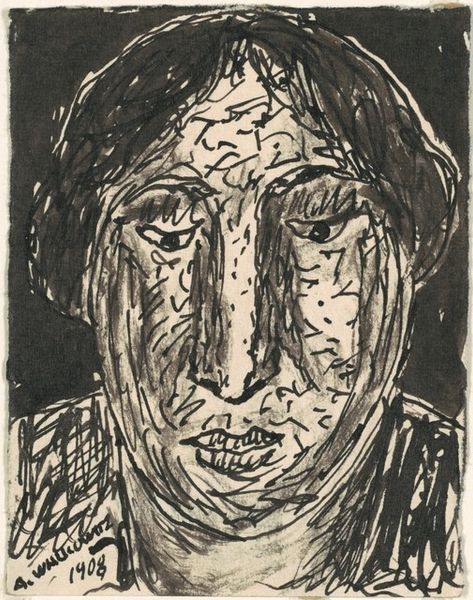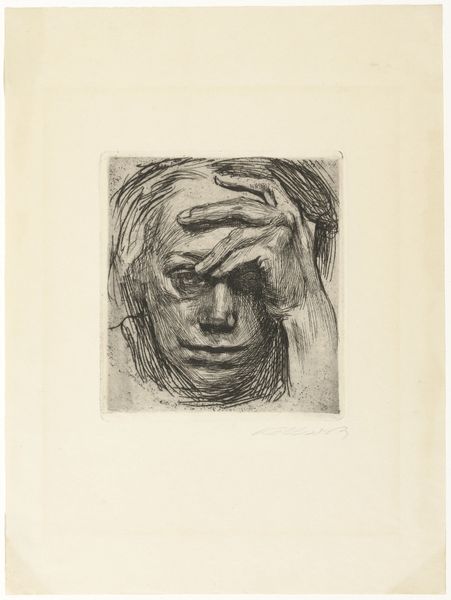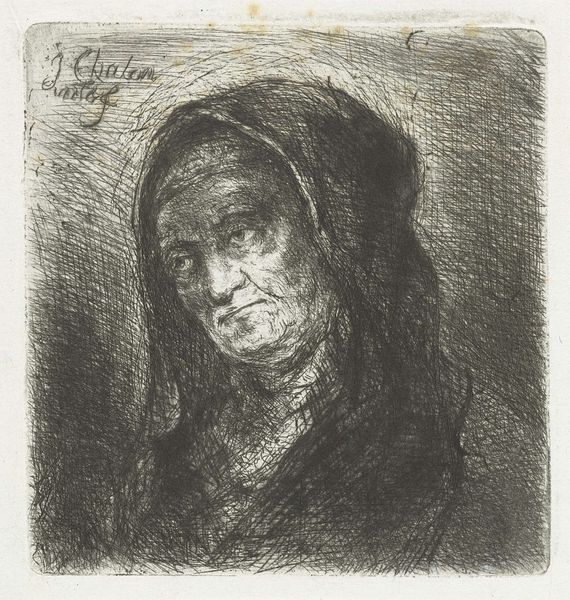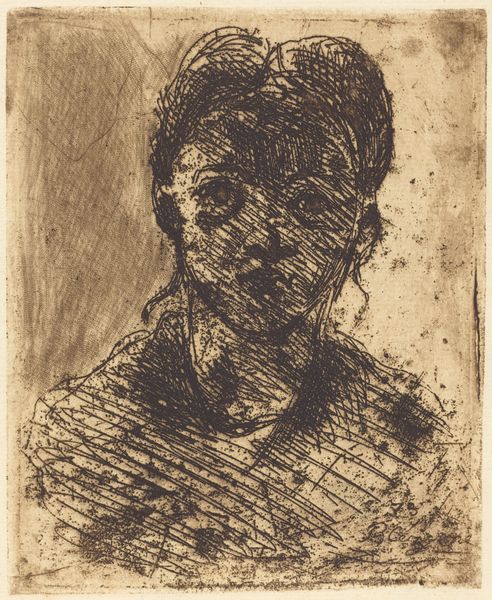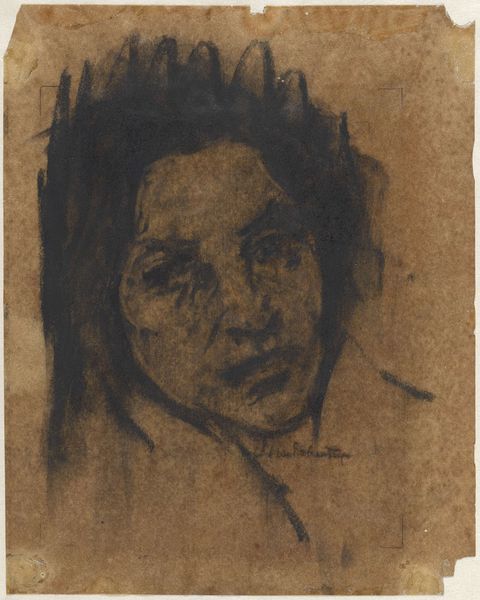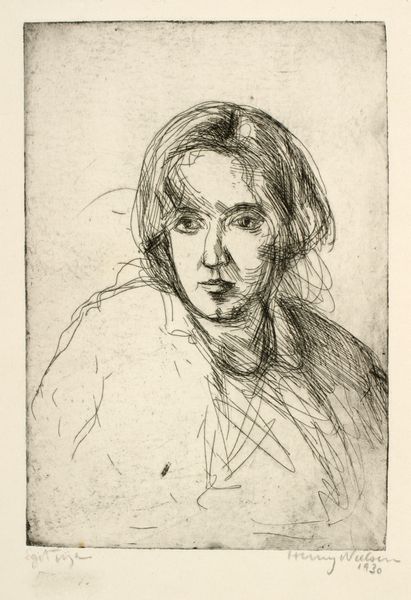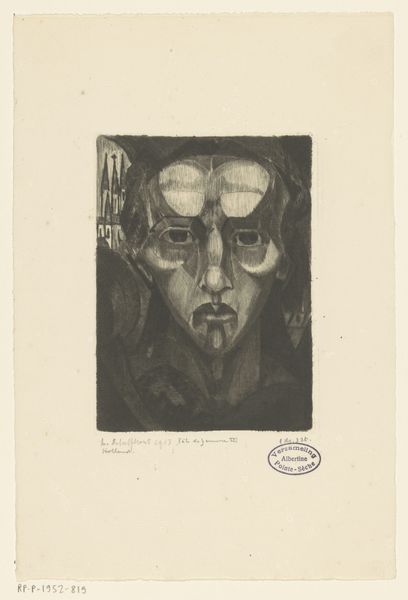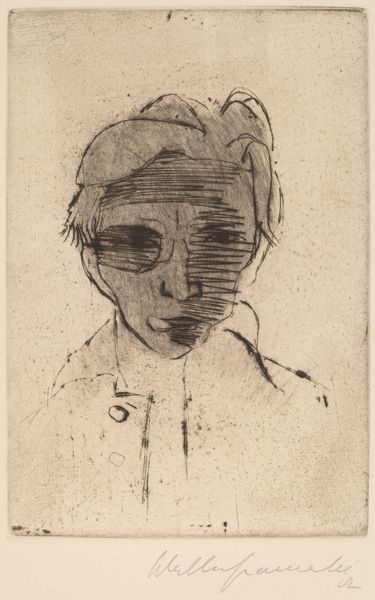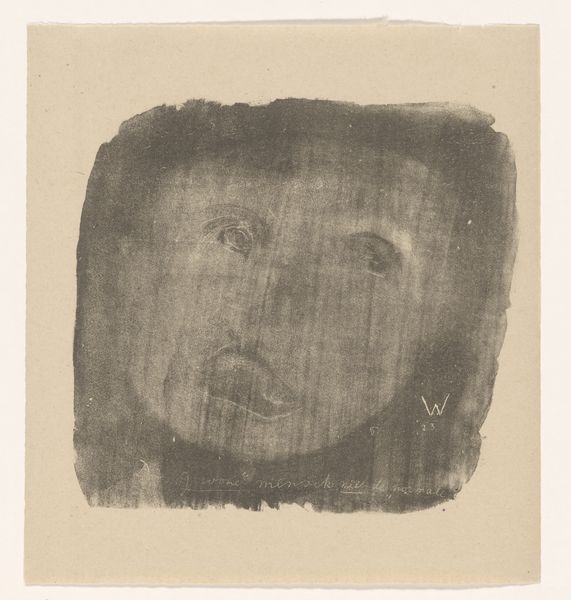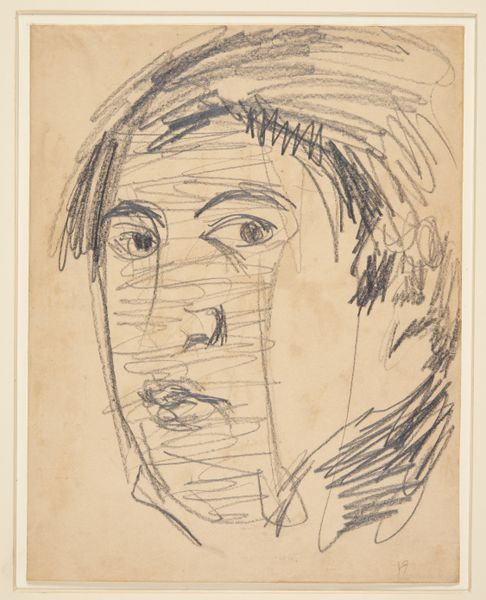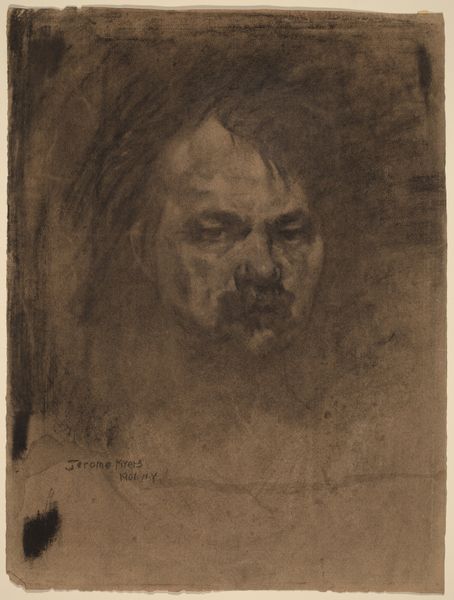
Dimensions: 318 × 263 mm (image); 447 × 342 mm (sheet)
Copyright: Public Domain
Curator: Here we have Théophile Alexandre Steinlen's lithograph titled "The Common Man," created in 1896. It resides here at the Art Institute of Chicago. What are your initial thoughts? Editor: It’s like staring into a mirror reflecting generations of weary souls. Melancholy, but resilient, like a quiet strength forged in the face of enduring hardships. It reminds me of a faded photograph, a relic of a bygone era. Curator: Indeed, the sitter's gaze does seem to hold a collective memory. Consider the symbolism of the title itself; "The Common Man." This isn't just one person, but perhaps represents an entire class, their hopes and burdens. Editor: Absolutely. And it is more than just a portrait, it feels like a haunting social commentary, rendered in shadow and light. Each line etched in that lithograph speaks volumes about struggle, poverty, and maybe even quiet desperation. Curator: Steinlen was deeply influenced by the social realism movement. As a frequent contributor to journals like "Le Chat Noir," his work often highlighted the plight of the working class in fin-de-siècle Paris. The image presents a universality transcending any single individual, capturing the human cost of rapid industrial change. The somber palette emphasizes that. Editor: True, but to me, there’s also something intensely personal about it. Those eyes have seen things, haven't they? And there's an intimate quality to the medium of drawing; it's unfiltered, immediate—you feel like you're glimpsing into the artist's own soul as well as the subject’s. The choice of lithograph seems right; it hints at reproducibility but also captures a vulnerable quality. Curator: It's a compelling fusion of the universal and the individual. The very marks of the lithographic process seem to humanize the figure further, reminding us that art, like life, is etched with its own imperfections and nuances. The medium, for Steinlen, carries echoes of social history. Editor: Looking at it now, I think it's the simplicity that gets me. No frills, no grandeur, just an unvarnished portrayal of humanity. We’re all “The Common Man” at some point, wrestling with our own silent battles. Curator: Well said. It appears we have peeled back a layer or two together here. The work’s power resides not only in its artistic merit, but also in its enduring resonance—a mirror reflecting back our shared humanity. Editor: Indeed. Art makes me feel like I have just had a revealing conversation with an unexpected kindred spirit, caught across time.
Comments
No comments
Be the first to comment and join the conversation on the ultimate creative platform.
